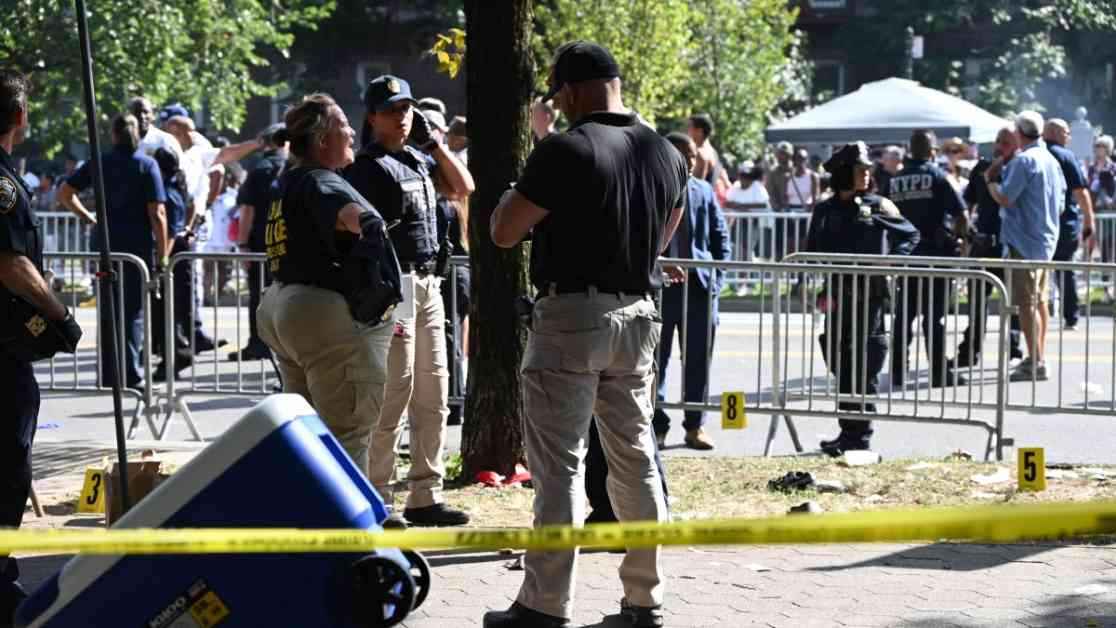A Teen’s Nightmare: Innocent Boy Wrongly Accused by NYPD
The life of Camden Lee, a 15-year-old high school student, took a drastic turn one September day when his innocence was stripped away by a single photograph. Leaving football practice, he found himself staring at a surveillance image of himself, alone on a Brooklyn street, labeled as a murder suspect by the New York Police Department (NYPD).
In the photograph, Lee stood in a hoodie and shorts, eyes downcast, as the police accused him of a heinous crime—discharging a firearm at the West Indian American Day parade, resulting in the death of one person and injuring four others. The shock and disbelief that washed over Lee were palpable as he grappled with the sudden turn of events.
However, behind closed doors, the NYPD swiftly backtracked on their accusation after a meeting with Lee and his lawyer. Despite clearing his name in private, they failed to publicly retract their statement, leaving Lee and his family vulnerable to the fallout of the false accusation.
The ordeal faced by Lee and his family has shed light on the NYPD’s handling of misinformation and sparked questions about their accountability. As Lee’s mother, Chee Chee Brock, candidly expressed, the incident shattered her trust in the police force, leaving her to ponder the extent of their actions and the repercussions of such grave errors.
Questionable Policies and Unanswered Queries
The circumstances surrounding Lee’s misidentification as a suspect remain murky, with no clear explanation from the authorities. On the day of the shooting, Lee had innocently attended a celebration of Caribbean culture with a friend, only to witness the chaos of gunfire erupting around them. His friend was wounded, and the surveillance image captured Lee’s shock and concern, not criminal intent.
Despite the police acknowledging their mistake in a subsequent meeting with Lee and his lawyer, the damage was already done. The photograph had been widely circulated by the NYPD’s communications division, leading to a flurry of public scrutiny and threats against Lee, who found himself at the mercy of online vigilantes.
The lack of official clarification and the continued circulation of the photograph online left Lee vulnerable to a wave of hostility, with death threats and accusations haunting him in his daily life. The impact on Lee’s mental and emotional well-being was profound, as he grappled with the weight of being labeled a murderer based on a false premise.
A Mother’s Fear and a Teen’s Struggle
For Brock, the trauma of seeing her son branded as a criminal was compounded by the fear of losing him to the streets or the justice system. Moving her family to a relative’s home for safety, she imposed strict restrictions on Lee’s movements, fearing potential gang retaliation or harm.
As Lee navigated the aftermath of the false accusation, his sense of self and freedom were irrevocably altered. The constant scrutiny and judgment from his peers and strangers alike left him feeling isolated and misunderstood, yearning to reclaim his identity beyond the damning image painted by the NYPD.
In the midst of a turbulent period for the NYPD, marked by internal upheavals and public scrutiny, Lee’s case serves as a stark reminder of the human cost of institutional failures. The lack of transparency and accountability in addressing the false accusation has left Lee and his family grappling with the lasting repercussions of a grave injustice.
As Lee reflects on the ordeal that has upended his life, he grapples with the weight of public perception and the enduring impact of being wrongfully labeled a criminal. The journey to reclaim his innocence and rebuild his sense of self is fraught with challenges, but Lee remains resilient in the face of adversity, determined to emerge from the shadows of false accusations and reclaim his identity.


